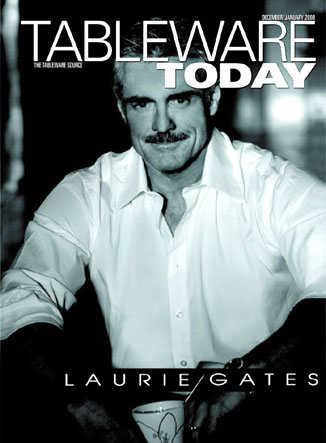|
||||||||||||||||||||||||||||||||||||||||||||||||||||||||||||||
| Royal Albert - Through the Years |
||||||||||||||||||||||||||||||||||||||||||||||||||||||||||||||
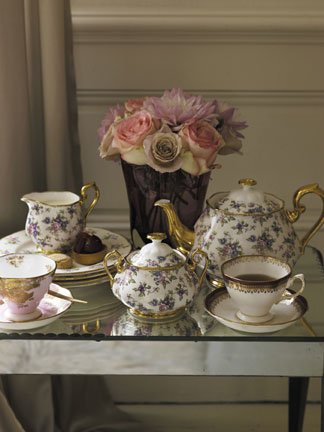 |
Classic and enduring designs like Old Country Roses, Lady Carlyle, and Moonlight Rose have secured Royal Albert’s place in our hearts. Now in honor of an auspicious 100 years of superb English craftsmanship comes ten designs, each representing a decade in the life of Royal Albert, |
|||||||||||||||||||||||||||||||||||||||||||||||||||||||||||||
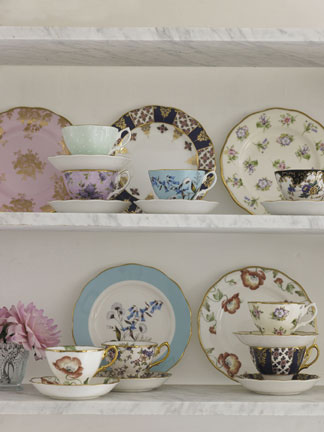 |
Since 1897, Royal Albert has established its brand as one of the most beloved around the world. Its decidedly English-styled bone china – think of a lovingly tended lush country garden – is now honored in a collection of ten inspired designs influenced by historic events and which typify the decades from which they come.
“After 100 years, Royal Albert is as fresh and alive as ever,” avers North American president and CEO Art Bylin. “Now we’re honoring, saluting, and commemorating the brand with a collection that celebrates a century of design and English craftsmanship.” The ten designs, Bylin continues, are related to the trends and history of their respective epochs and many were inspired by a walk through Royal Albert’s extensive archive. Over the coming year, in-store promotions and events, national advertising, and fixturing will herald the launch of 100 Years of Royal Albert. Phase two of the multi-prong project – figurines, mugs, giftware, ornaments, and a new Old Country Roses design – rolls out at the spring New York Tabletop Show. For now, each of the ten designs in the 100 Years of Royal Albert collection sport three-piece dessert/breakfast sets – $59.99 – and one design, English Chintz, from 1940, also has a three-piece tea set, $119.99. If the program is successful tea sets in other designs will follow. V.P. of marketing Dennis Marton’s enthusiasm is palpable. “This is not a short-term plan,” Marton prefaces. “We’re looking at dinnerware down the road backed with a major promotional ad campaign. We expect that 100% of our retail partners will join on.” It’s an ambitious program to be sure, particularly with the diminishing fortunes of formal tableware. Bylin pooh-poohs the doom and gloom. “Royal Albert is very much a relevant brand,” he counters. “That’s why Old Country Roses is the best-selling pattern in the world. Sure it’s a traditional look, but it’s not out of date. Royal Albert is a fashion house and fashion is never out of date.” Royal Albert, in fact, generates upwards of 40% of parent company Royal Doulton’s annual revenue. “It’s a huge international brand,” Bylin tutors, “and remains a top U.S. brand. You may be surprised how many brides continue to register for Old Country Roses, which was up 25% last year.” The company proactively leverages the design with about 50 additions annually – there are 100 active pieces – and has spent generously on advertising; that goes a long way in registering increases despite a depressed category. “And now,” Marton continues, “with tea drinkers growing by leaps and bounds what we’re doing with our three-piece sets is very relevant.” “Look,” Bylin, the longtime dinnerware veteran, injects, “I understand the category is having challenges – certainly the whole tableware category is dated – but we’ve separated ourselves from the competition to find the USP – unique selling proposition – that makes our brands relevant. It’s one reason we advertise as aggressively as we do. We make the product relevant to the way people live and entertain today.” Tag lines like Life is short use the good china, He did promise me a rose garden, and Better than a dozen roses, Bylin stresses, “make the brand more relevant.” By this point, with more than a dozen “relevants” spouted, it’s clear that the strategy for this 100-year-old resource is to prove its products are germane for today’s young – and finicky – purchasers. “We use the word relevant every day,” Bylin acknowledges, “because we know that being relevant is the direct path to sales.” Being relevant means an investment of time and money researching what’s pertinent to today’s buyers. “Research proves that a majority of women would invest in fine china if price weren’t a concern,” Marton clues, “so we know the opportunity is there to capture the bride and we’re taking the initiative ourselves to bring at least three new formal bone china designs to market every year.” Bylin concurs. “Even though we have collections from Gordon Ramsay and Terence Conran for the kitchen what we do best is formal,” the exec proffers, and then proof of his declaration: “Our business, as you know, has grown 50% in the last four years.” That’s the time that Bylin, Marton, and V.P. of sales Rick Fencel were tapped to steady a sinking ship. “We’ve got a long way to go,” Bylin presses on, “and we have lofty goals.” He reminds that Royal Doulton isn’t as big as sister businesses Waterford and Wedgwood, and that provides Bylin and his minions a dangling carrot to shoot for. “We’re looking at Minton next and increasing its favor among carriage trade retailers,” Bylin informs. Expect an ambitious multi-step program by mid-year. “It’s one of the most prestigious brands in the industry,” Bylin purports. “We’ll do for Minton what we’ve done for Royal Doulton and what we’re doing for Royal Albert.” What they’re doing sounds simple enough: a large dose of TLC backed with interesting, innovative, and saleable programs that are marketed and promoted well. It’s not rocket science. Royal Albert, Bylin and Marton pronounce, is the most traditional of all Royal Doulton’s brands and holds the most potential. “Certainly it has the most fans,” Marton smiles. He’s talking about the Old Country Roses juggernaut which generates 80% of Royal Albert’s sales here. Since its 1962 launch, the total production of Old Country Roses could stretch a mind-boggling 10,000 miles. Talk about a yellow brick, make that a rose-covered, road. Still, the execs eschew the notion that they’re a one-trick pony enterprise. Bylin doesn’t even like the suggestion. “We have a number of patterns that do well,” he asserts. “Royal Albert has a very definite niche because of its ornate, traditional, historic, and elaborate English craftsmanship and there’s an appreciation for that. There are many young people interested in history and tradition and we have a phenomenal heritage that’s relevant to them. I’d feel comfortable giving my daughter or daughter-in-law any of Royal Albert’s designs.” Still, the seasoned Bylin is sage enough to know there’s no slam-dunk in tabletop. “Nothing’s easy in this business,” he agrees, “but we think this is worth the effort and our organization is prepared to make that effort.” Consolidations, closings, and competition have chopped away at many major dinnerware sources, Bylin cedes. “I just had a west coast trip that used to take three weeks,” he offers. “I was there for a few days. We’ve lost a lot of department stores and the ones left can be understaffed and overwhelmed. Because personnel may not be able to do the job it’s incumbent on us to justify our existence and get more floor space.” An eight-point marketing plan is meant to chisel space and yield sales. The plan worked so well for Royal Doulton (consider that 50% sales increase) that the blueprint has been effected for Royal Albert. The plan starts with brainstorming a concept (in this case 100 Years of Royal Albert) backed by market research. Next up is design, product development, sourcing (in England or Indonesia), and manufacture. Warehousing and distribution follow and then the collection is marketed with a robust advertising campaign. (The off-record ad amount has been well north of $1 million for all Royal Doulton brands.) “I’m a firm believer that if you don’t know where you’re going you’ll never get anywhere,” Bylin espouses. “That’s why we do strategic planning, one step logically leading to the next. It’s essential so that when you arrive in the market you’re relevant.” Relevant. The not-so-secret word that’s the impetus behind 100 Years of Royal Albert. “Royal Albert’s business has doubled since we got here,” Marton observes. “We know there’s a customer for our product and when we got chills walking through the archive on a recent visit, it was clear we needed to do something to celebrate this century of wonderful design.” Prospective patterns were drawn from musty leather-bound books. “It was like looking through a family album,” Marton shares. “There were thousands of beautiful designs and we chose ten which were indicative of each decade of Royal Albert’s history.” For 1900, Regency Blue’s rich hues and gold accents signaled the end of Victorian times. Duchess is 1910’s contribution using the company’s signature roses against a black palette. The delightful Spring Meadow typifies the 1920’s post-war ebullience and the emergence of a more positive era. The 1930’s brought Polka Rose whose fresh apple green background and a single rose are reflective of the art deco period. From the 1940’s is English Chintz, roses and forget-me-nots against a crackle background and lush gold trim. When Elizabeth II assumed the throne in a post-World War II 1952, a rebirth was afoot leading to the appropriately-named Festival, blue harebells against a beautiful blue/green border (and Bylin’s favorite.) Britain moved into the swinging ’60s and Golden Roses’ almost modish pink background offsets opulent gold roses. Representing the 1970s is the coral, yellow, and gold Poppy, evocative of the decade’s flower power. The wealth and entrepreneurship of the ’80s are typified in Holyrood with a simple burgundy band and gold frieze work. Lastly, swirling lilacs against a purple background, Hartington Lane bears homage to the 1990s, combining two Royal Albert designs of the decade: Lilac Lane and Hartington. Hatbox-styled packaging is skewed to each decade with stories of each on the box. “I wouldn’t be surprised if our customers bought all ten and used them, not just stuck them in a curio cabinet,” Bylin delights. “These designs are a return to luxury at very good price points.” The 100 Years of Royal Albert program has a simultaneous global roll out; Royal Albert distributes to 53 countries. “The beauty of this program is that it works anywhere around the world,” Marton suggests. The program starts shipping the first of the year. Bylin and his team aren’t daunted by the herculean task ahead. “It’s a step at a time, a day at a time,” Bylin points out. “We know we have a wonderful brand. Royal Albert is quintessential English craftsmanship and for that there’s always a market.” |
|||||||||||||||||||||||||||||||||||||||||||||||||||||||||||||
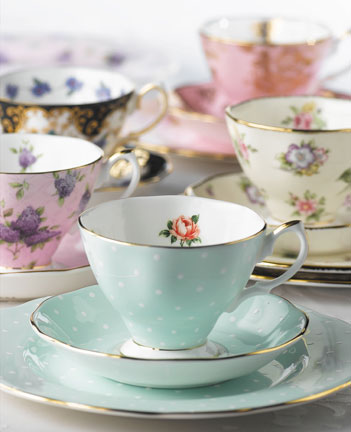 |
||||||||||||||||||||||||||||||||||||||||||||||||||||||||||||||
 |
||||||||||||||||||||||||||||||||||||||||||||||||||||||||||||||
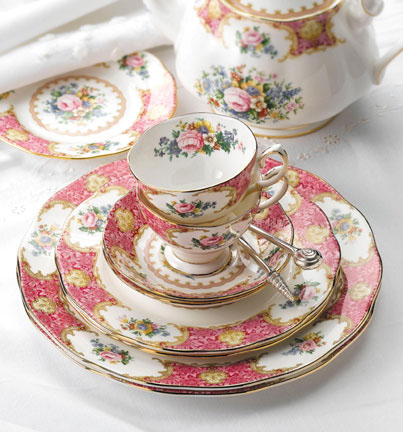 |
||||||||||||||||||||||||||||||||||||||||||||||||||||||||||||||
 |
||||||||||||||||||||||||||||||||||||||||||||||||||||||||||||||
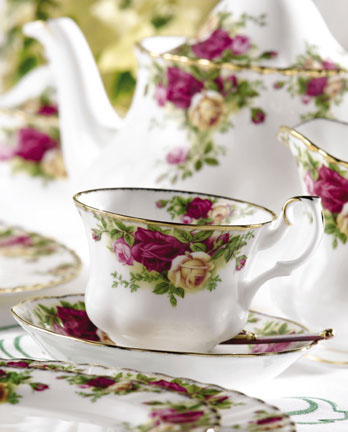 |
||||||||||||||||||||||||||||||||||||||||||||||||||||||||||||||
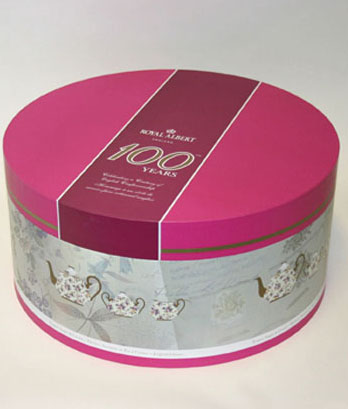 |
||||||||||||||||||||||||||||||||||||||||||||||||||||||||||||||
